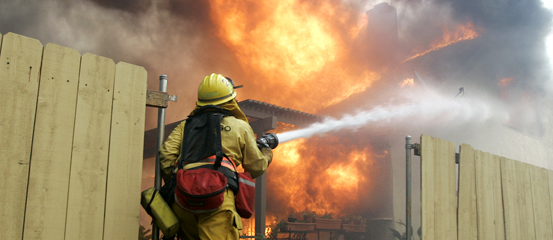Happy Halloween

Hope you had a great knight.




Easterners commonly complain that there is no "weather" at all in Southern California, that the days and the seasons slip by relentlessly, numbingly bland. That is quite misleading. In fact the climate is characterized by infrequent but violent extremes: two periods of torrential subtropical rains which continue for weeks and wash out the hills and send subdivisions sliding toward the sea; about twenty scattered days a year of the Santa Ana, which, with its incendiary dryness, invariably means fire. At the first prediction of a Santa Ana, the Forest Service flies men and equipment from northern California into the southern forests, and the Los Angeles Fire Department cancels its ordinary non-firefighting routines. The Santa Ana caused Malibu to burn as it did in 1956, and Bel Air in 1961, and Santa Barbara in 1964. In the winter of 1966-67 eleven men were killed fighting a Santa Ana fire that spread through the San Gabriel Mountains.
Just to watch the front-page news out of Los Angeles during a Santa Ana is to get very close to what it is about the place. The longest single Santa Ana period in recent years was in 1957, and it lasted not the usual three or four days but fourteen days, from November 21 until December 4. On the first day 25,000 acres of the San Gabriel Mountains were burning, with gusts reaching 100 miles an hour. In town, the wind reached Force 12, or hurricane force, on the Beaufort Scale; oil derricks were toppled and people ordered off the downtown streets to avoid injury from flying objects. On November 22 the fire in the San Gabriels was out of control.












"During National Breast Cancer Awareness Month, we recognize the progress being made towards a cure for this disease, which robs so many women of their health and, in too many cases, their lives. This year, an estimated 203,000 American women will be diagnosed with breast cancer, and almost 40,000 will die. Although we have made great medical strides in understanding breast cancer, much remains to be done to advance prevention, early detection, and effective treatment.
"Regular screenings remain the most effective way to identify breast cancer in its earliest and most treatable stages. For women 40 and over, having mammograms every 1 to 2 years can reduce the risk of dying from breast cancer...
"To prevent breast cancer, we must increase awareness of its risk factors and causes. Age and genetic factors have been shown to increase the risk of breast cancer. And researchers are now exploring how diet and hormonal factors are linked to possible causes. This information will help women and their doctors make informed health care choices....
"NOW, THEREFORE, I, GEORGE W. BUSH, President of the United States of America, by virtue of the power vested in me by the Constitution and the laws of the United States, do hereby proclaim October 2007 as National Breast Cancer Awareness Month. I call upon Government officials, businesses, communities, health care professionals, educators, volunteers, and the people of the United States to continue our Nation's strong commitment to preventing, treating, and ultimately curing breast cancer."

from Jenna's one-year appointment,
Sept 17:
Weight: 21lbs. 13oz. (60%)
Height: 29 1/2in. (70%)
Head Circumference: 17 1/2in. (60%)